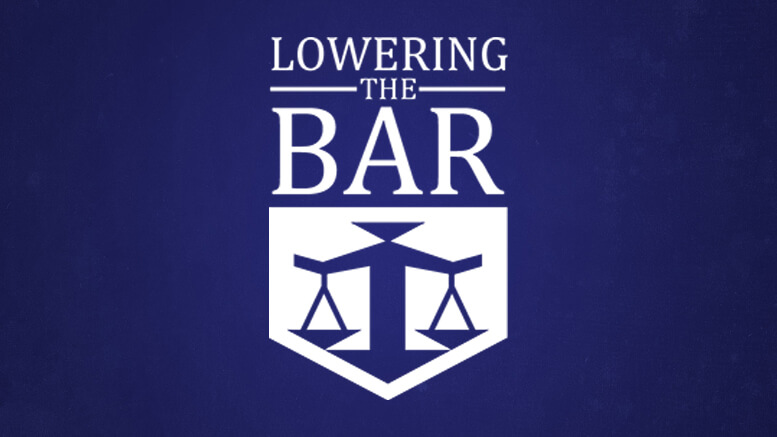Here’s today’s Daily Double:
A: Fourteen.
Q: How many pages would it take the Ninth Circuit to explain why attacking someone with bare hands does not qualify as “assault with a dangerous weapon”?
United States v. Rocha, 598 F.3d 1144 (9th Cir. 2010). If you need additional information, the person involved is not Chuck Norris. If Chuck was involved we might have something to talk about. But this case involved a prison fight in which the defendant, Victor Rocha, came up behind someone and pulled his feet out from under him, causing him to slam down onto the concrete floor. Set aside for a moment the question whether that is a nice thing to do. The question here is whether a jury that convicted the defendant, on those facts, for “assault with a dangerous weapon” has acted correctly.
The answer is no, because a weapon is something you hold in your hand. A hand that is not holding anything cannot be wielding a weapon, dangerous or otherwise. We might say that such a person is “empty-handed” or “unarmed,” by which we mean not that he actually has no arms (unless he actually doesn’t and then we are just being mean) but rather to indicate that he has no weapons. And while that person might be guilty of assault and battery should he use the empty hands to hit someone, he could not possibly be guilty of assault “with a weapon” because, again, he does not have a weapon.
That’s a lot shorter than the Ninth Circuit’s discussion of this issue, and everything after the first four words was really just me being a smartass. In what world is it necessary to spend pages and pages analyzing the question whether an unarmed person has assaulted someone “with a weapon”?
Not that other people tried to make this easier for the court by being sensible themselves. The government, for example, possibly foreseeing a problem with accusing an unarmed man of using a weapon, argued that Rocha’s “weapons” had been his hands, or the concrete floor, or some combination of the two. Again, if you knock someone down with your bare hands, that’s assault and battery. But the answer to the question whether you have assaulted that person with the floor is NO.
So, how might we generate 14 pages on this issue, if we wanted to? Well, we could first discuss our “multi-faceted test for determining whether an object is a dangerous weapon,” although the defendant was not holding any objects whatsoever. We could then engage in a lengthy review of cases finding that “objects that have perfectly peaceful purposes may be turned into dangerous weapons and that such use may be punished under the federal assault statute.” Those cases all seem to make perfectly good sense, except for an Eighth Circuit decision that sneakers are a “dangerous weapon” if used to kick somebody, which is stupid, but they still don’t have anything to do with this case.
We would then regale readers with a review of possibly every case in the United States that has dealt with “whether body parts can constitute dangerous or deadly weapons for purposes of . . . assault and battery statutes.” This review concludes, not surprisingly, that “most states have determined that body parts cannot be considered a dangerous or deadly weapon.” How about that? For example, the New York Court of Appeals has held that biting somebody—which is definitely assault and battery — is not “assault with a dangerous instrument” just because you used your teeth. People v. Owusu, 712 N.E.2d 1228 (N.Y. 1999). The court decided that the state statute was intended to increase liability if a defendant “has upped the ante by employing a device to assist in the criminal endeavor,” and teeth are not a device. “Mr. Owusu’s teeth came with him,” the court held, and it seems hard to argue with that. Except that some states apparently do, given that the court listed several that do treat body parts as “weapons” for purposes of assault statutes. Of course, in addition to being stupid none of these rulings are binding on the Ninth Circuit, so again it is a mystery why the court spent so much time on them.
The bottom line, as the court concluded at long last, is that body parts can’t be considered “weapons” because there has to be some distinction between simple assault and assault with a dangerous or deadly weapon. “We find it difficult,” the court reasoned, “to see how someone could be accused of assault without using a body part in some way,” an insight that seems to have escaped the jury entirely and, again, took the Ninth Circuit panel 14 pages to reach.
Why so long? One possible explanation: the opinion was written by Judge Jay Bybee, who along with his former compadre John Yoo has had some trouble in the past with what seemed like common-sense definitions, like whether something qualifies as “torture.” So maybe that explains it.
